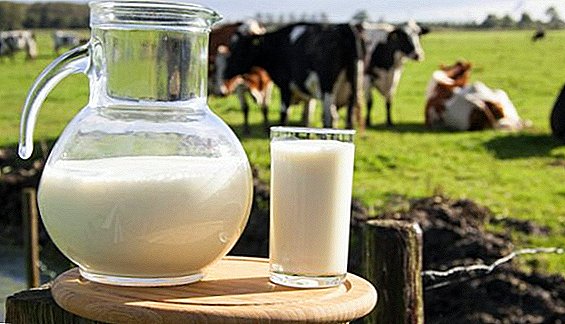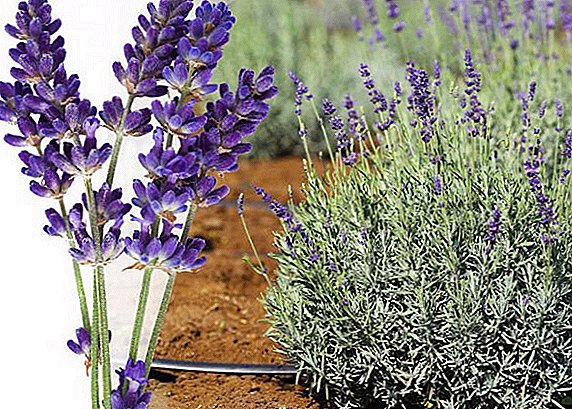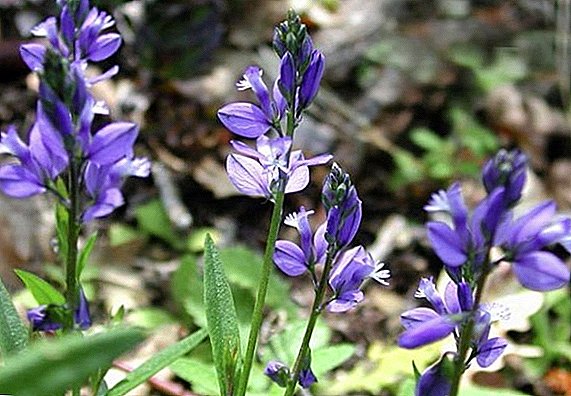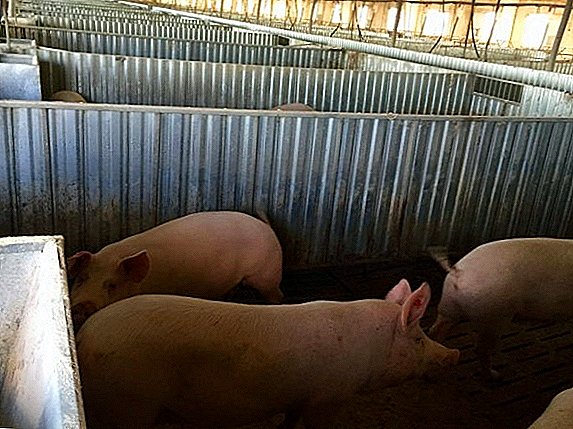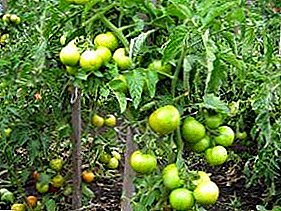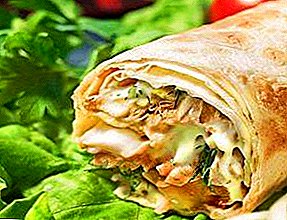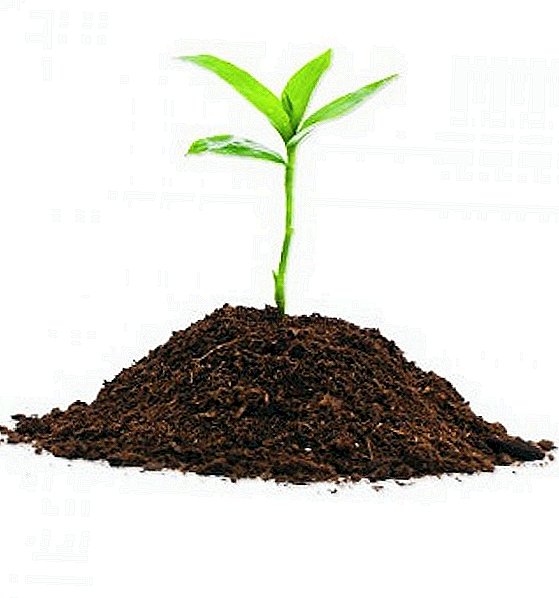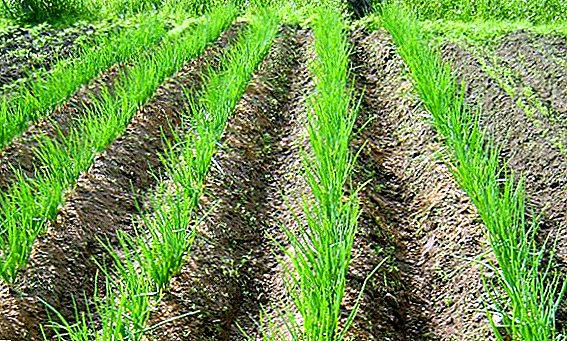 The dream of every summer resident and gardener is a rich, tasty harvest.
The dream of every summer resident and gardener is a rich, tasty harvest.
And how can it be annoying when pests of garden crops, spoiling vegetables and significantly reducing their productivity, are on the way to achieving a dream.
Often you have to spend a lot of time and effort to eliminate annoying insects from your site, using a variety of methods.
However, in this article, we will talk about how to get rid of an onion fly effectively, since, most often, it is this insect that is found on the beds with onions.
Did you know? Planting onions can simultaneously attack more than 10 pests that feed on leaves, stems, roots, roots, seeds of plants, which cause enormous damage to yields and make the soil unsuitable for planting related crops in the next three to four seasons.
Onion fly description
 In order to know with whom to fight, it is necessary to have an idea of what an onion fly looks like. In fact, it is very similar to a normal housefly: its body is ashy or yellowish gray and reaches a size of 5-7 mm, its wings are transparent. The fly itself does not pose a danger to plants, but its larvae cause significant harm.
In order to know with whom to fight, it is necessary to have an idea of what an onion fly looks like. In fact, it is very similar to a normal housefly: its body is ashy or yellowish gray and reaches a size of 5-7 mm, its wings are transparent. The fly itself does not pose a danger to plants, but its larvae cause significant harm.
Around mid-May, the fly takes off after wintering to lay eggs and continue its race. By the time its departure coincides with the flowering of cherries, lilacs, dandelions. In the same period, the diet of the insect is pollen of flower plants. The fly starts laying eggs in early summer, placing them in the soil and onion shoots.
After a week, white legless larvae appear up to 10 mm long, which begin to actively feed. They eat onion scales for several weeks, gnaw their way into the inside of the bulb, and then go to the ground for pupation. After 14-18 days, a new brood of flies appears. Over the summer there is a change of two or three generations. The wintering of the pupae occurs in the soil, at a depth of 5–20 cm.
Thus, the first generation harms the bow in June, and the second begins its harmful activity in July-August.
What harm from onion flies
 The first signs of onion fly larvae are yellowing and drying of feathers in onions, as a result of which the plant begins to lag behind in growth and bulbs rot, which begin to emit a nasty smell.
The first signs of onion fly larvae are yellowing and drying of feathers in onions, as a result of which the plant begins to lag behind in growth and bulbs rot, which begin to emit a nasty smell.
Insects attack all types of onions, garlic, bulbous flower plants, some types of lettuce.
Preventive measures from onion flies
The main measures to combat the pest will be preventive measures that limit the favorable conditions for the invasion of the parasite. They can be the key to preserving the harvest and will serve as a good alternative to the use of drugs harmful to human health.
Protection against onion flies is to:
- treatment of planting material before planting;
- early seva;
- correct change of cultures;
- planting in close proximity of plants, scaring onion flies;
- autumn digging soil.
The use of agricultural practices in the fight against insect pest
 Initially, should be a responsible approach to the choice of planting material. It must be purchased in specialized stores, because you will have more chances to get high-quality bulbs.
Initially, should be a responsible approach to the choice of planting material. It must be purchased in specialized stores, because you will have more chances to get high-quality bulbs.
If you still dare to use questionable planting material, before you land it in the ground, Onions should be treated with hot water (you can directly during planting). The bulbs are placed in water heated to a temperature of + 45 ... +46 ºС, they are kept there for 10-15 minutes, and at a temperature of + 50 ... +52 ºС -3-5 minutes. After that they are dried.
Also onion sets before planting treated with a solution of potassium permanganate, and insecticides are used to disinfect the chernushki.
The soil for onion planting must be prepared in advance. First, one should not neglect the autumn deep digging of the earth (up to 25 cm deep), which helps to significantly reduce the number of any types of pests (caught on the surface of the pupa will die from the cold), and second, because the onion fly does not tolerate a salty taste, Planting soil should be sprayed with saline.
Frightening effect on onion flies have planted nearby carrots, tomatoes and lovage.
Did you know? The onion fly cannot stand the smell of carrots, and the carrot fly does not tolerate onion flavor. Planting onions and carrots in the neighborhood, you can get rid of two pests at the same time.

Among agrotechnical methods of pest control should be highlighted and compliance with the recommendations on crop rotation. Onions should not be planted annually in the same place, and the return of the crop to the same site can only be four to five years.
It is also necessary to avoid the organization of onion beds in areas where garlic, lettuce, and tulips were growing before. The best predecessors for planting onions will be tomatoes, cabbage, cucumbers.
In order for the onions to mature and grow strong before the onion fly and the laying of its eggs, it must be planted earlier. Mulching of the soil with dry half-dead manure or peat, as well as with needles, the smell of which frightens off the indicated pest will help protect the plant from onion flies. The fly does not lay eggs on loose soil.
At the first detection of damaged plants they are removed from the soil and destroyed by burning.
Folk remedies for onion flies
If, nevertheless, agrotechnical techniques did not help, and the onion fly larvae have chosen your onion beds, you will have to take more effective measures to destroy them. It is better to start with gentle techniques, for example, by spraying folk remedies. Below you will find several folk recipes from onion flies, tested on their plots by many gardeners. 
Infusion of dandelions
An effective way to scare away an onion fly and its larvae is to process onions. infusion of dandelions. For its preparation, dandelion roots (200 g) are used, which are placed in 10 liters of water and infused for seven days.
Watering is carried out every two weeks. The first treatment from pests is desirable to do in the spring, before the departure of the fly. Also onions are watered with infusions of other insecticidal plants: mint, pine needles, decoctions of wormwood, valerian.
Spraying a solution of tobacco dust
For the preparation of the repellent solution will need 200 g of tobacco dust, 10 liters of water and 30 g of liquid soap. Dust and soap are added to freshly boiled water, leaving the solution to infuse for several days. After that you can begin the spraying process.
Tobacco dust is used for sprinkling onion beds. A mixture of tobacco dust and lime dust is suitable for this procedure. 
Saline spray
We have already written above about spraying the soil before planting saline. Salt watering is also used when pests are found on the beds. This is done three times per season, using a spray gun.
When sprouts reach a height of 5 cm, they are watered with a solution prepared from 300 g of common salt dissolved in 10 liters of water. It is important that when you water the onions with salt, you avoid the solution getting on the leaves of the plant, but if the solution still gets on the feathers, then they must be washed with clean water.
Then watering is carried out with more concentrated solutions. So, for the second time (15-20 days after the first), you can apply a solution of 450 g per 10 l, in the third (20 days after the previous one), 600 g of salt dissolves in the same volume of water. After 3-4 hours, the solution from the soil must be washed with clean water.
Important! This method can help significantly reduce the number of pests, but it can also damage the soil. - lead to its excessive salinity.
A mixture of dry mustard and ash against insect
Good results show treatment with a mixture of ash and dry mustard in a ratio of 3: 1. She sprinkled the beds when the fly takes off for egg-laying. To achieve a positive effect, treatment should be carried out at least two times. 
There are a few more recipes for making ash mixture with the addition of black pepper and tobacco dust:
- ash - 200 g;
- tobacco dust - 1 tsp;
- ground black pepper - 1 tsp.
- tobacco dust (1 part);
- wood ash (part 2).
Dusting the soil with sunflower ash is also used. In addition to the pest control agent, it will also be a fertilizer for the plant that feeds it with potassium and magnesium.
Important! Folk methods have only a scaring effect and do not destroy pests by 100%. Start off use they should be taken before the onion fly, but a total of two must be processed two or three times per season.
Chemicals against onion flies

The use of chemicals from onion flies is an extremely undesirable measure, since the onions tend to accumulate harmful substances, which means that after that it can be dangerous to eat.
Well established itself as a foliar feeding and a means to combat the onion fly ammonium salt.
Also, they often irrigate with solutions of mercuric chloride (1: 1500), nicotine sulfate (0.2-0.3%), and anabazine sulfate.
There are a number of insecticidal drugs that allow to get rid of onion flies during the growing season of the plant, among them "Aktara", "Karate Zeon", "Tabazol", "Sochva", etc. However, they are used only if the number of pests exceeded the threshold of 10% (three or four eggs per plant).
There are also recommendations for the treatment of onion shoots "Immunocytophyte" (2 tablets / 2 l of water), "Intavir" (1/4 tablet / 2 l of water). When spraying, an adhesive is added to the solution: for example, 1 tsp. Liquid soap or 3 drops of glycerin. Repeated spraying is carried out in a month, using Immunocytophyte.
At the stage of planting bulbs are also made "Medvetoks", "flyer", "Zemlin".
Important! When processing insecticides need to exclude the possibility of contact with the drug on the feathers of onions.

The use of one of the described methods of dealing with the onion fly is unlikely to help quickly and effectively expel the pest from the garden. Therefore, to achieve the desired result can only be applied in combination.


